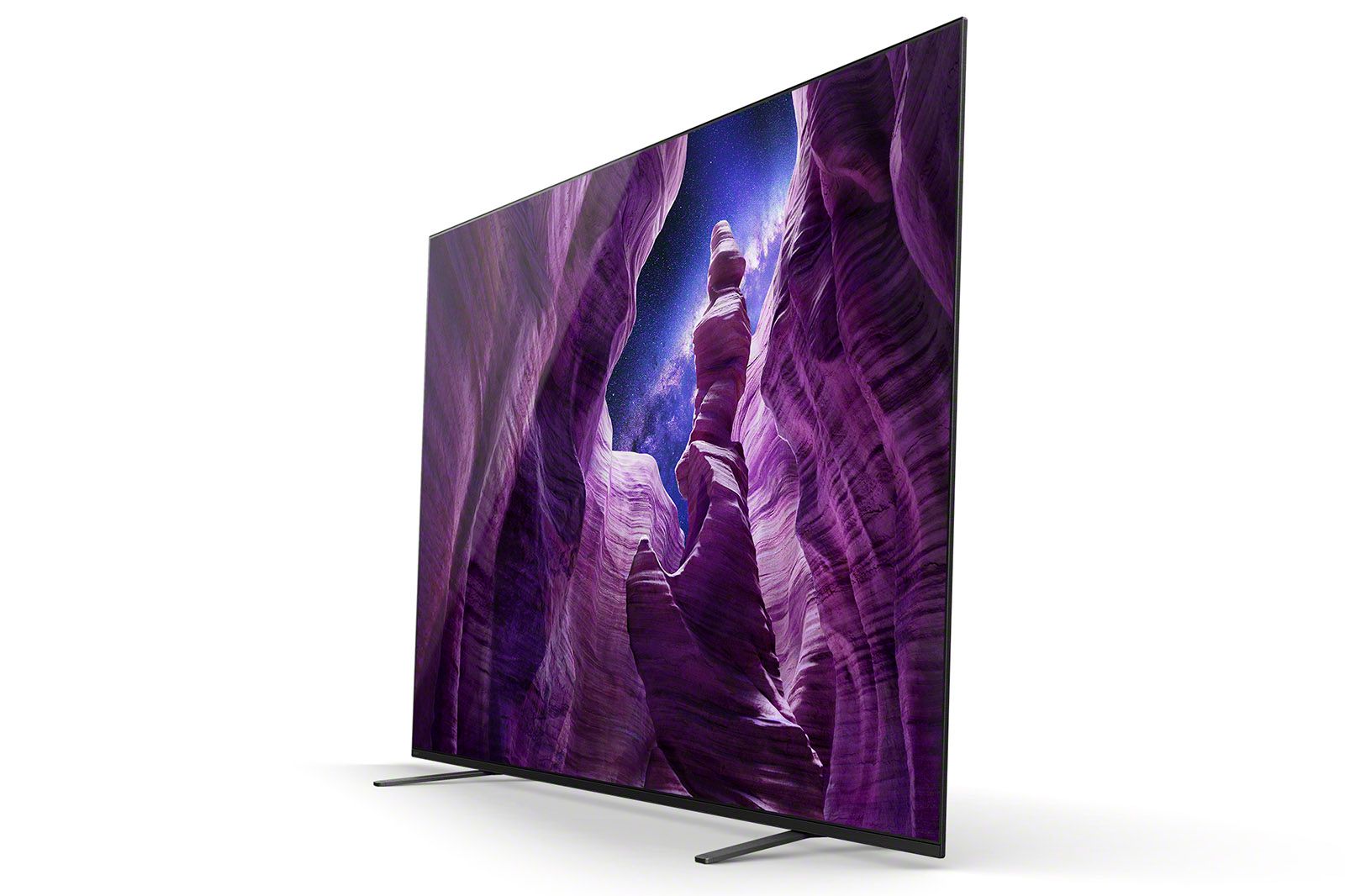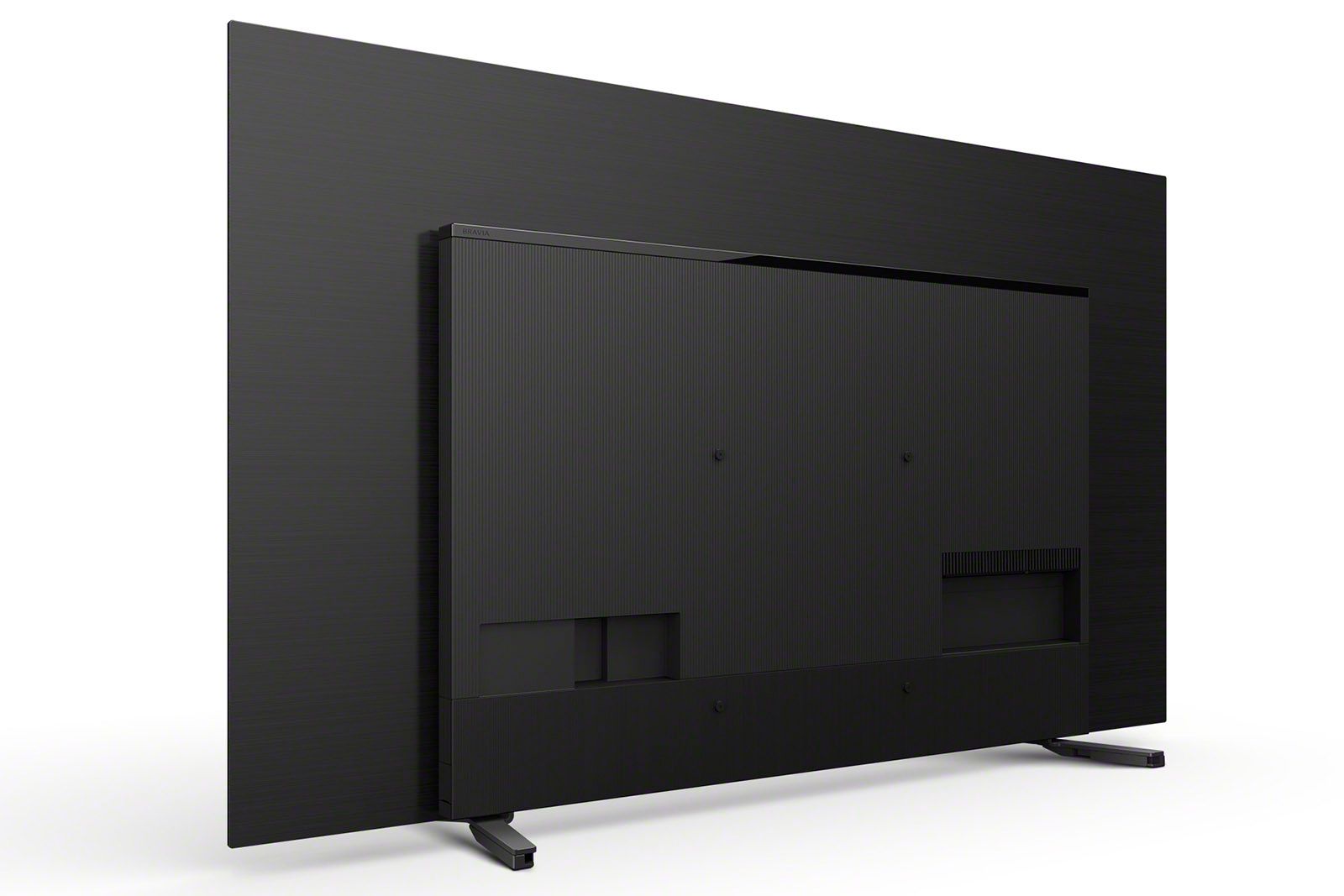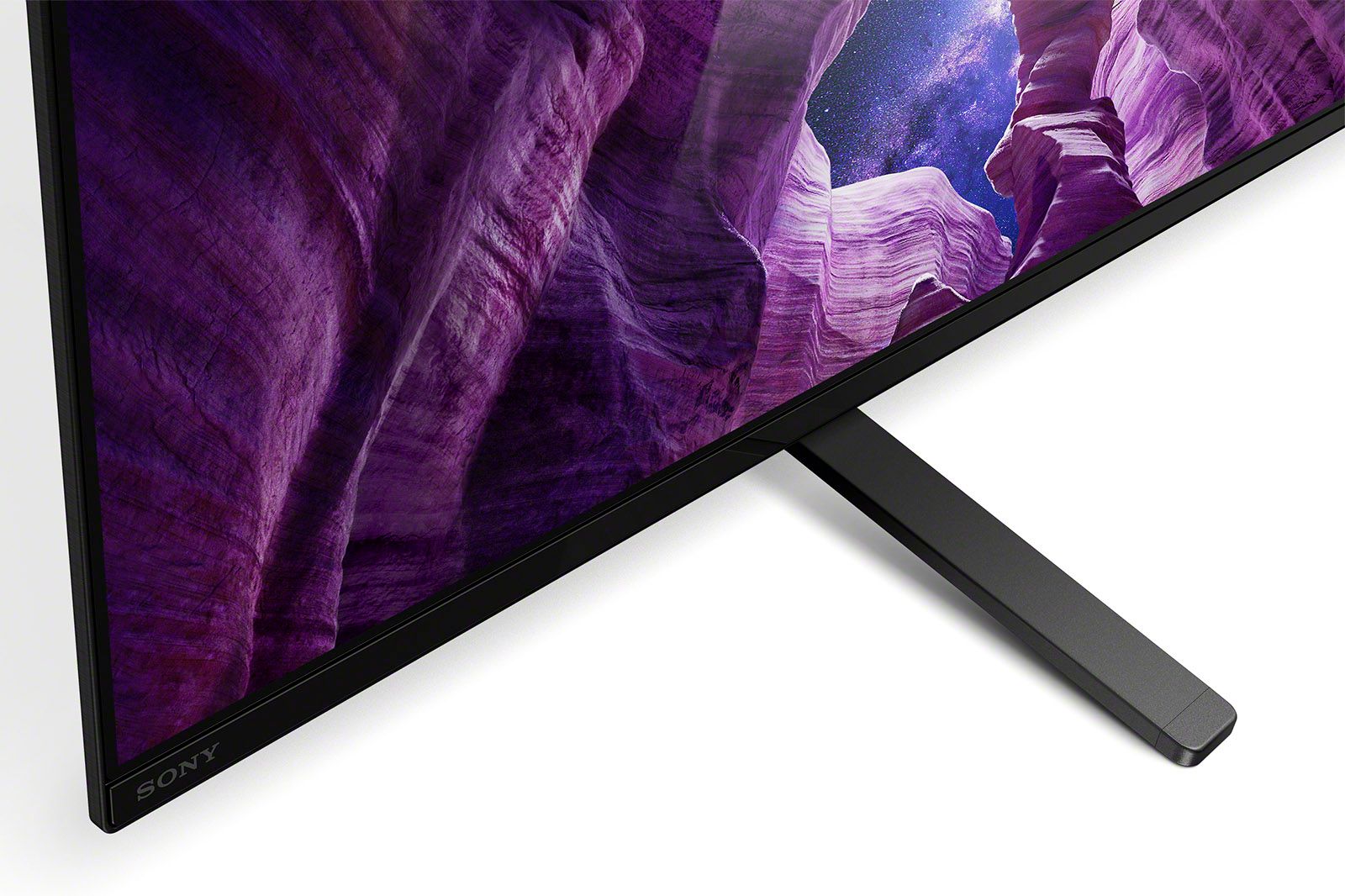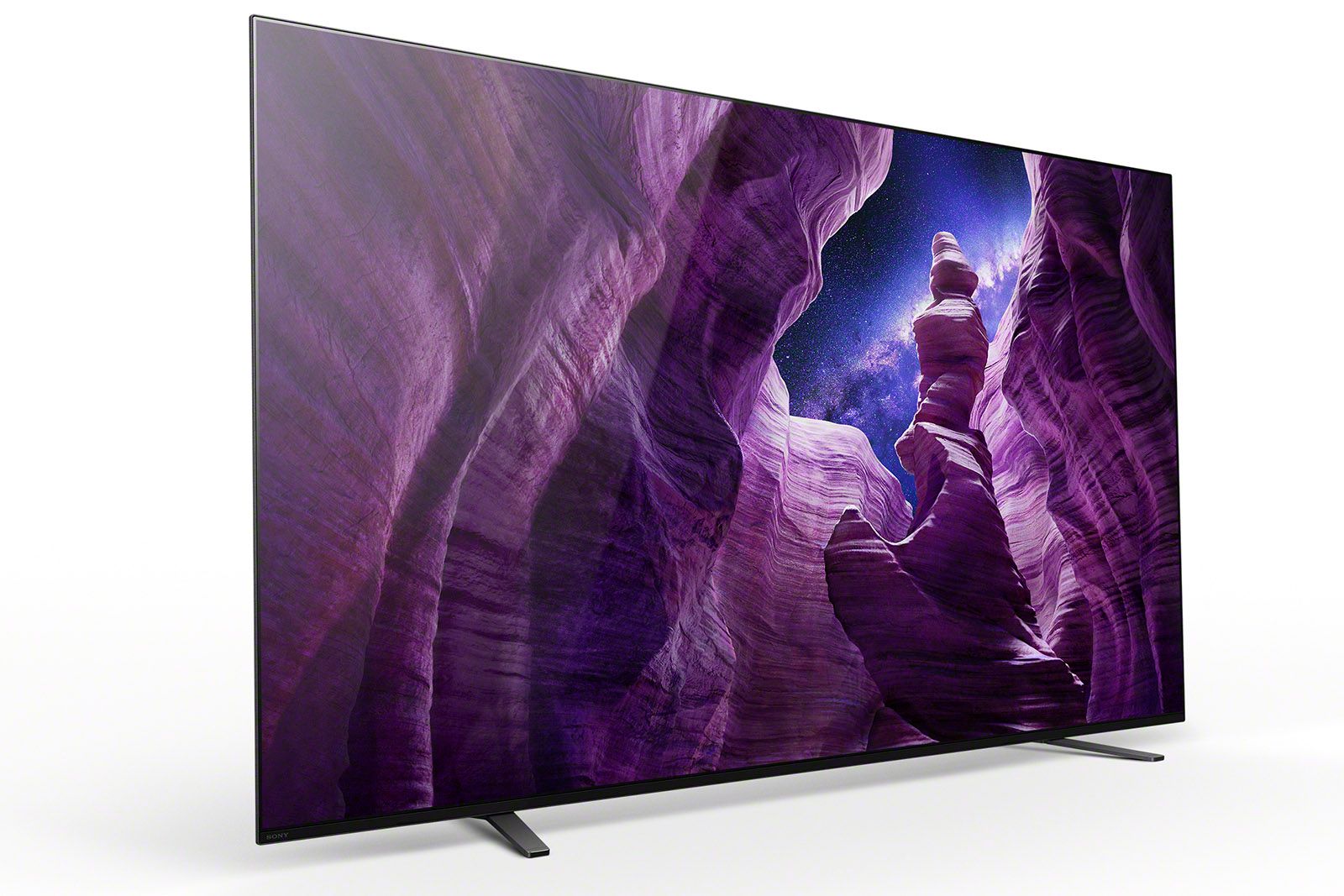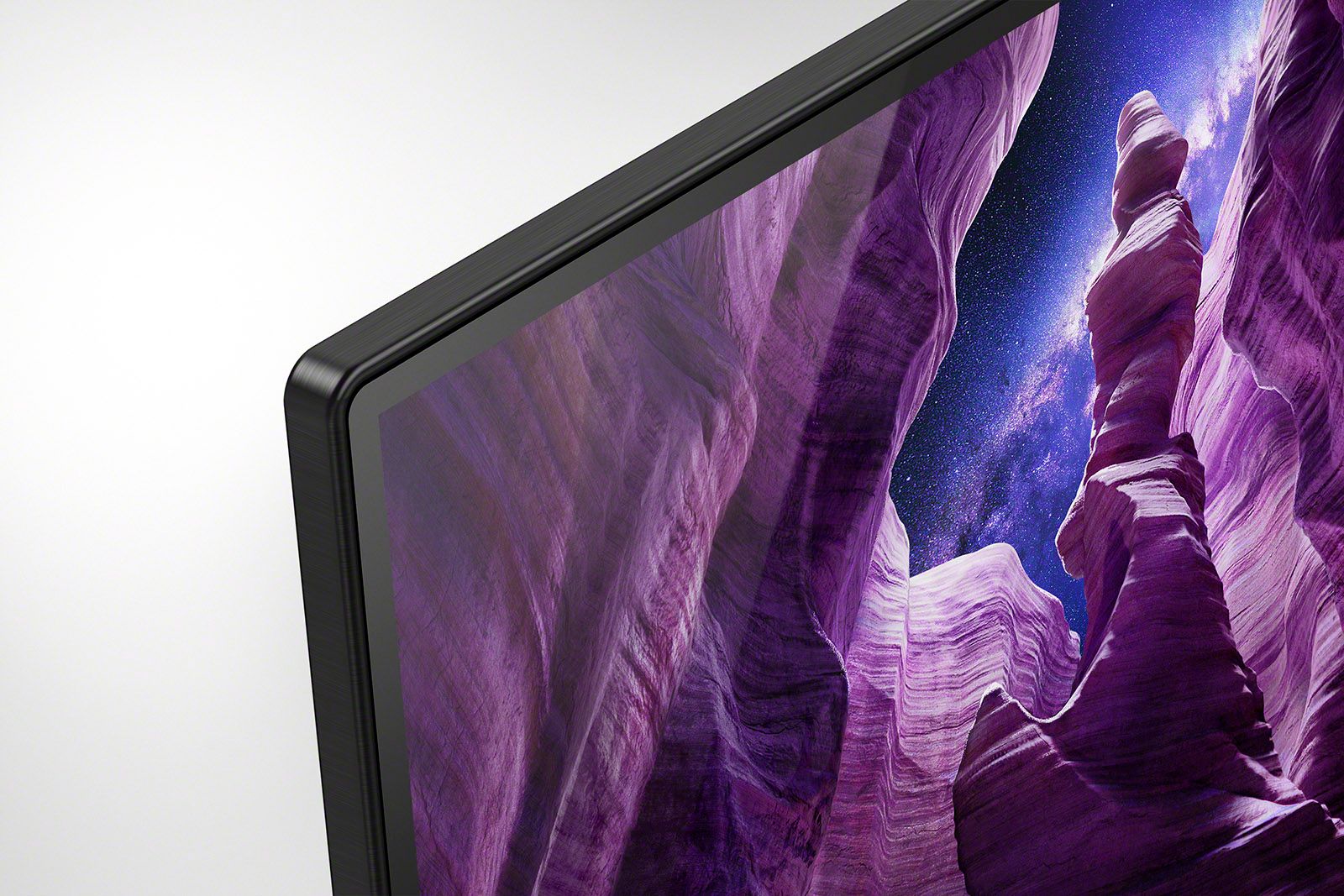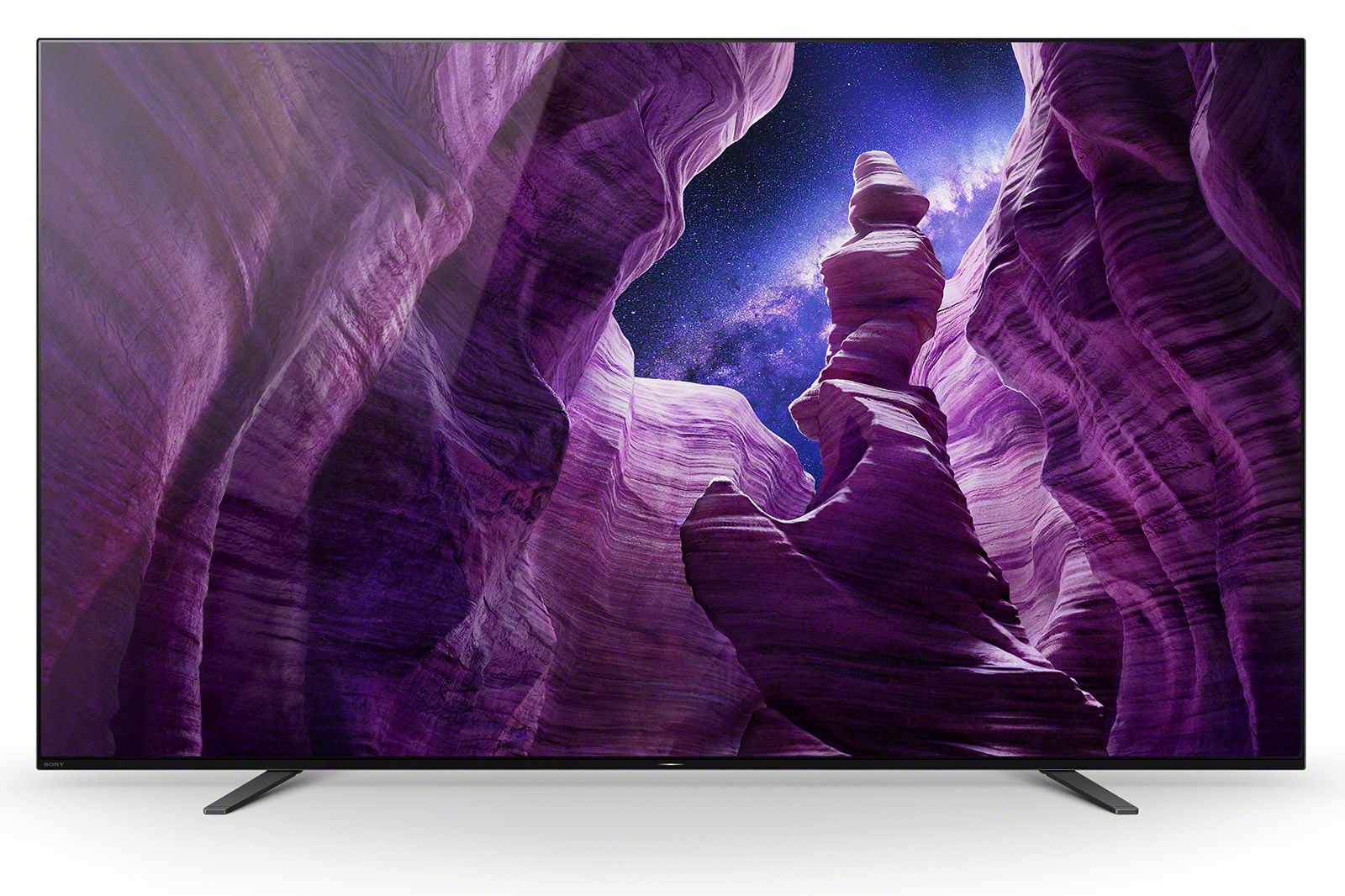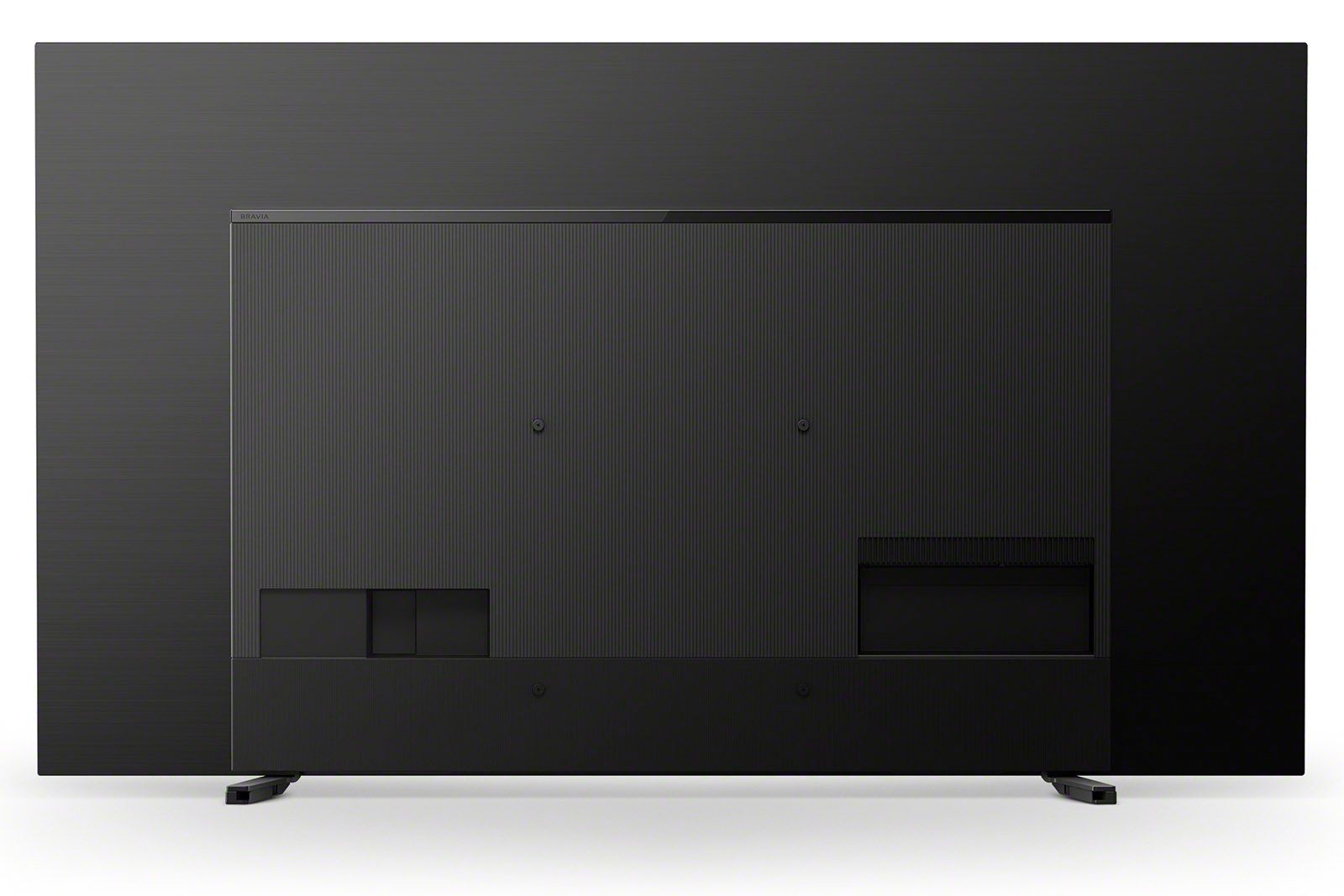Thanks to its X1 processors and unique Acoustic Surface sound - where the actual screen produces the TV's audio - Sony's OLED TVs have always been good.
By addressing previous brightness, price, operating system, and black level niggles, however, Sony's first new OLED of 2020, the A8, takes things to a whole new level.
Our quick take
With the A8, Sony has addressed brilliantly some of the brightness and black level consistency issues that have held its previous OLED models back.
The A8 further extends Sony's reputation for class-leading motion performance, too, adding another level of refinement to what was already some of the most nuanced and natural pictures in the OLED world.
Gamers may rue a few missing next-gen features, but for TV and movie fans the A8 is an audio-visual sliver of heaven.
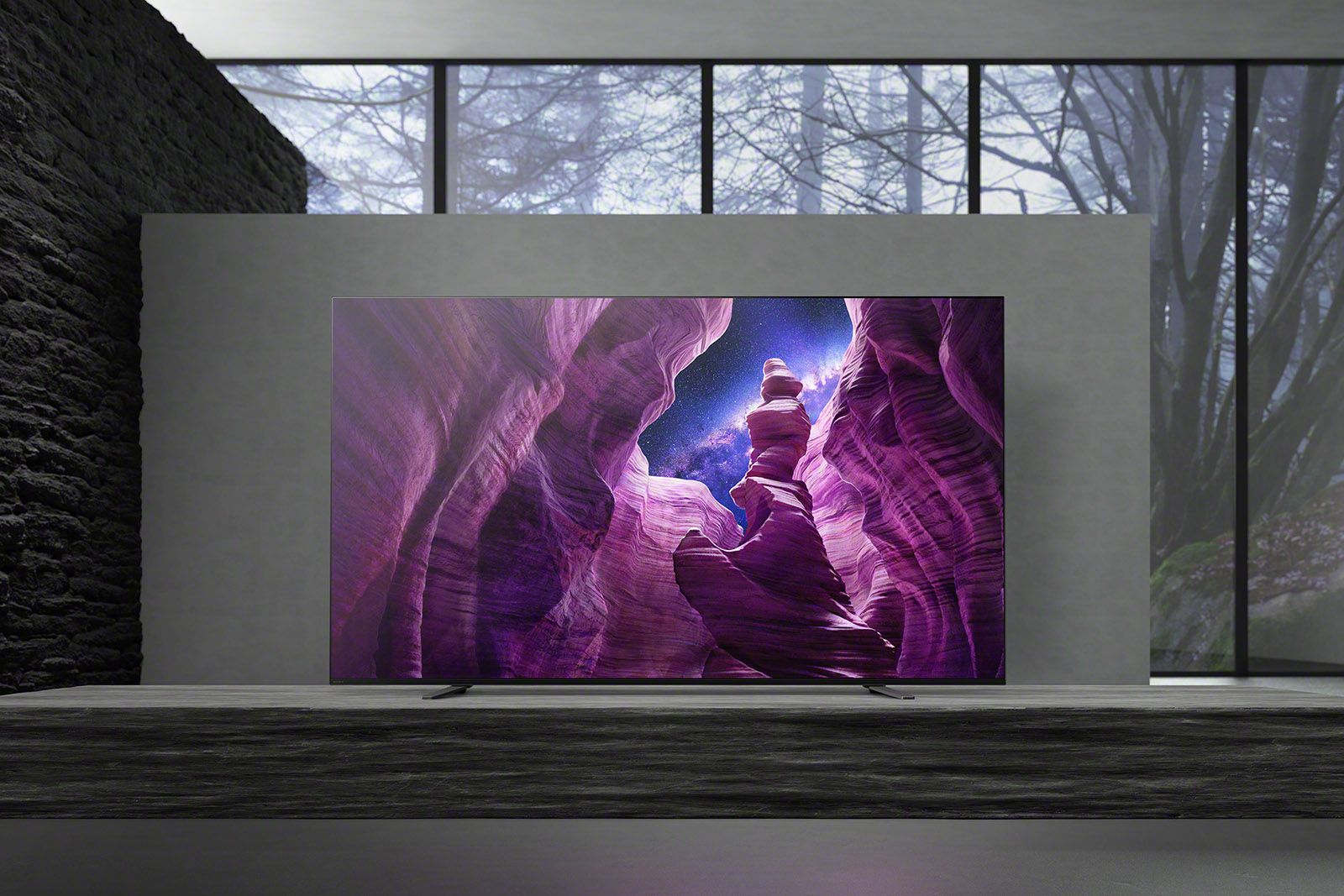
Sony A8 4K OLED TV - 5.0 / 5
| FOR | AGAINST |
|---|---|
|
|
Sony KD-65A8
Design
- 4x HDMI inputs
- 3x USB ports
- LAN & Wi-Fi
Studied from the side or rear, the 65A8 arguably looks a bit dated. Not least because a column running down a wide swathe of its rear end sticks out further than most TVs do these days.
Fortunately, though, this chunky area is only noticeable from a pretty extreme viewing angle - or in the extent to which the screen sticks out from the wall, if it's mounted in that way.
From a normal seating position, however, the exceptionally robust look and feel of the metal-trimmed frame around the screen actually creates a gorgeously sheer, minimalistic look - as if the screen's been carved out of polished black granite.
In its standard desktop build, the screen sits so low on the provided silver desktop feet that they're barely noticeable, enhancing the minimalistic impression. Especially as the feet carry built-in channels for tidying away stray cabling.
The feet can also be attached in such a way that they lift the screen a couple of inches. This approach provides enough clearance to place a soundbar under the screen without it obscuring the bottom part of the picture.
Connectivity looks at first glance exactly as it should. Which is to say there are four HDMI sockets, three USB ports, and the usual Bluetooth and Wi-Fi network support. The HDMIs support the eARC feature, too, meaning that the TV can pass lossless Dolby Atmos sound over HDMI to a soundbar or AV receiver.
The HDMIs do not support any of the big gaming-related features expected to become desirable with the arrival of the PS5, Xbox Series X and next-gen PCs. Namely support for variable refresh rates (VRR), 4K/120Hz playback, and Automatic Low Latency Mode (ALLM) switching.
The A8 OLED models are available from some retailers in an A85 design variation, which replaces the two-position feet with more premium looking but fixed feet, and replaces the A8's standard voice remote control with a slightly posher version.
Picture Features
- HDR Support: HDR10, Dolby Vision, HLG
- Processing engine: X1 Ultimate
Despite being Sony's entry-level OLED TV for 2020, the A8 series get the brand's current top-of-the-line X1 Ultimate processor. This, perhaps unsurprisingly, hasn't changed substantially from previous versions. Given some of the excellent results it's produced before, though, Sony might well argue that if something ain't broke, it doesn't need fixing.
X1 Ultimate brings with it a host of key picture features. Upscaling, for instance, benefits from sub-4K sources being compared against a huge dual database of different picture sources to ensure that the TV applies the most effective results. Unlike the less powerful X1 Extreme processor, the upscaling delivered by X1 Ultimate also breaks the image down into different objects and elements, to give a more intelligent and locally effective upscaling effect.
A similarly localised object-based approach is taken to the A8's HDR Remaster system. Sony reckons this converts standard dynamic range sources to high dynamic range (HDR) so well that on most of the TV's picture presets it's made the feature impossible to turn off.
Also making an appearance through X1 Ultimate is a Super Bitmapping system for removing potential striping noise from HDR colour blends. The actual range of colours the A8 can produce, meanwhile, will benefit from Sony's long-running Triluminos system, backed up by X1 Ultimate's Precision Colour Mapping support.
Arguably the single most significant processing feature of the Sony A8, though, is its Pixel Contrast Booster. This uses a combination of image analysis and pixel-level power management to try and maximise the OLED panel's contrast range. So, at its most basic, deeper black pixels and brighter white pixels can exist side by side. Crucially, though, the system also works across the whole colour spectrum, expanding the sense of colour volume and the contrast-based intensity of all parts of any given image.
Why is this feature particularly important for the A8? Because the screen isn't innately very bright. The highest measurement it achieved using a test screen featuring was around 640 nits. That's significantly lower than the 750-800 nits other OLED TVs typically manage. So the potential ability of the Pixel Contrast Booster to get the absolute maximum impact out of the Sony A8's available brightness is critical.
The biggest innovation to Sony's picture processing for 2020 is a new option for handling motion. Sony has long held the motion high ground with its excellent Motionflow processing, but now it's added X-Motion Clarity to the mix. Available under a new Clearness option, X-Motion Clarity is a variation on the black frame insertion technology sometimes used on LCD TVs to create a more cinematic feel to 24p content.
Smart Features
- Smart system: Android TV
- Integrated YouView
Sony's long-running reliance on Android TV for the bulk of its smart TV features hasn't typically done it many favours. Android has, in the past, been buggy, unhelpfully organised, and sluggish. Happily, though, the latest Android Pie 9.0 version carried on the A8 fixes at least some of these issues.
For starters, Android TV now runs slickly, and doesn't cause any sluggishness in the TV's standard adjustment menus. You can also customise its layout more than you used to be able to, and Sony has managed to improve the way Android's settings integrate with the TV's separate settings.
Android TV's interface still looks a little old-school versus many rival smart TVs - especially in the way its homescreen takes over the whole picture. It still crashed out a couple of times during our testing, too, and while it's packed with hundreds of apps (that most people won't need), it misses one or two that many users would expect to see - most notably Apple TV.
Sony has, though, added the engaging YouView platform to get round Android TV's lack of support for some of the UK's most popular catch-up TV apps.
Picture Quality
Sony OLED TVs have always excelled with the finer things in AV life. The picture processing - especially the X1 Ultimate system deployed in the A8 - is always excellent at revealing subtle details, producing nuanced colours, upscaling sub-4K sources to 4K and, especially, making motion look clean, sharp and natural. So it's no surprise to find all of these strengths present and correct on the A8.
In fact, motion looks even better than ever, with the new Clearness option - albeit only when used on its lowest power level - proving a welcome addition to what was already an excellent and thoughtful collection of motion processing settings.
A more surprising but important improvement comes with the dynamism of the A8's pictures. Either because of refinements to the peak brightness the Pixel Contrast Booster wrings out of the OLED panel's self-emissive pixels, or because of improvements to the the panel's ability to deliver deep, noiseless black levels more consistently, pictures look noticeably punchier and richer than they have on previous Sony OLED generations.
So much so that despite the screen not measuring as bright as some rivals, it still typically looks at least as intense as any other OLED with shots containing a mix of light and dark content.
Even more surprisingly, the A8 also doesn't look significantly duller than measurably brighter rival OLED TVs when showing really bright HDR images, such as daylight exteriors. Dullness with such imagery has previously been the main area of weakness with Sony OLEDs, but here, presumably because of a combination of enhanced panel refinement and the way Sony maps HDR content to the A8's innate brightness limitations, full-screen brightness sometimes actually feels higher than that of many rival OLED tellies. Regardless of what the measured brightness figures might say.
There is, inevitably, a trade off for this impressive full-screen brightness. Namely that sometimes the very brightest parts of HDR pictures can look a little over-exposed and bleached of detail. For the majority of the time, though, the trade-off decisions Sony has made for HDR feel perfectly suited to the A8's abilities.
The A8's Dolby Vision support boosts dynamism a touch more with Dolby Vision-encoded content, too. So it might have been interesting to see if similar improvements could have been delivered with HDR10+ content too, had Sony opted to support it. Though there's no denying that the X1 Ultimate processor does a very good job of getting the best out of industry standard HDR10 and HLG sources where Dolby Vision isn't available.
The A8 is also outstanding with standard dynamic range sources. The HDR Remaster feature works brilliantly, gently massaging colours into looking more vibrant, and subtly enhancing the image's range of light without the results looking in any way unbalanced or strained. Purists can turn it off if they really want to by choosing any preset other than Vivid, Standard or Cinema. And while this inevitably results in a flatter picture, it still looks gorgeously refined and authentic.
Gamers may, as discussed earlier, be deterred from buying a A8 by its lack of support for multiple next-gen gaming features. The set does, though, take just 18ms to produce pictures when running in its Game picture mode. This isn't quite the lowest such figure a TV has produced in 2020, but only the most hardcore gamers will have a problem with it.
Add to all the A8's picture quality thrills OLED's support of pretty much any viewing angle without the picture losing contrast and colour and you've got a TV that combines Sony's usual refinement and naturalism with new levels of punch and dynamism to truly gorgeous effect.
Sound
The Acoustic Surface technology Sony has used for its past few OLED generations has always been good. So it's not surprise to find the A8 producing an open, clean and direct sound, filling the room with a startlingly immersive and dynamic soundstage.
The set also does a great job of making specific sound effects - especially vocals - appear to come from the exact place on the screen where they're supposed to be coming from.
The A8 builds on previous entry-level OLED Acoustic Surface systems in the bass department too. A couple of newly designed woofers built into the screen's rear do a good job of underpinning the set's expansive mid-range with some welcome extra bass extension - without succumbing to distortions, even under extreme pressure. This new bass accolade can occasionally reduce the clarity of subtle sound effects at the bottom end of the mid-range. But this doesn't stop the A8 from being one of the best sounding TVs around.
Sony KD-65A8
To recap
Sony has addressed brilliantly some of the brightness and black level consistency issues that have held its previous OLED models back. Gamers may rue a few missing next-gen features, but for TV and movie fans the A8 is an audio-visual sliver of heaven.

